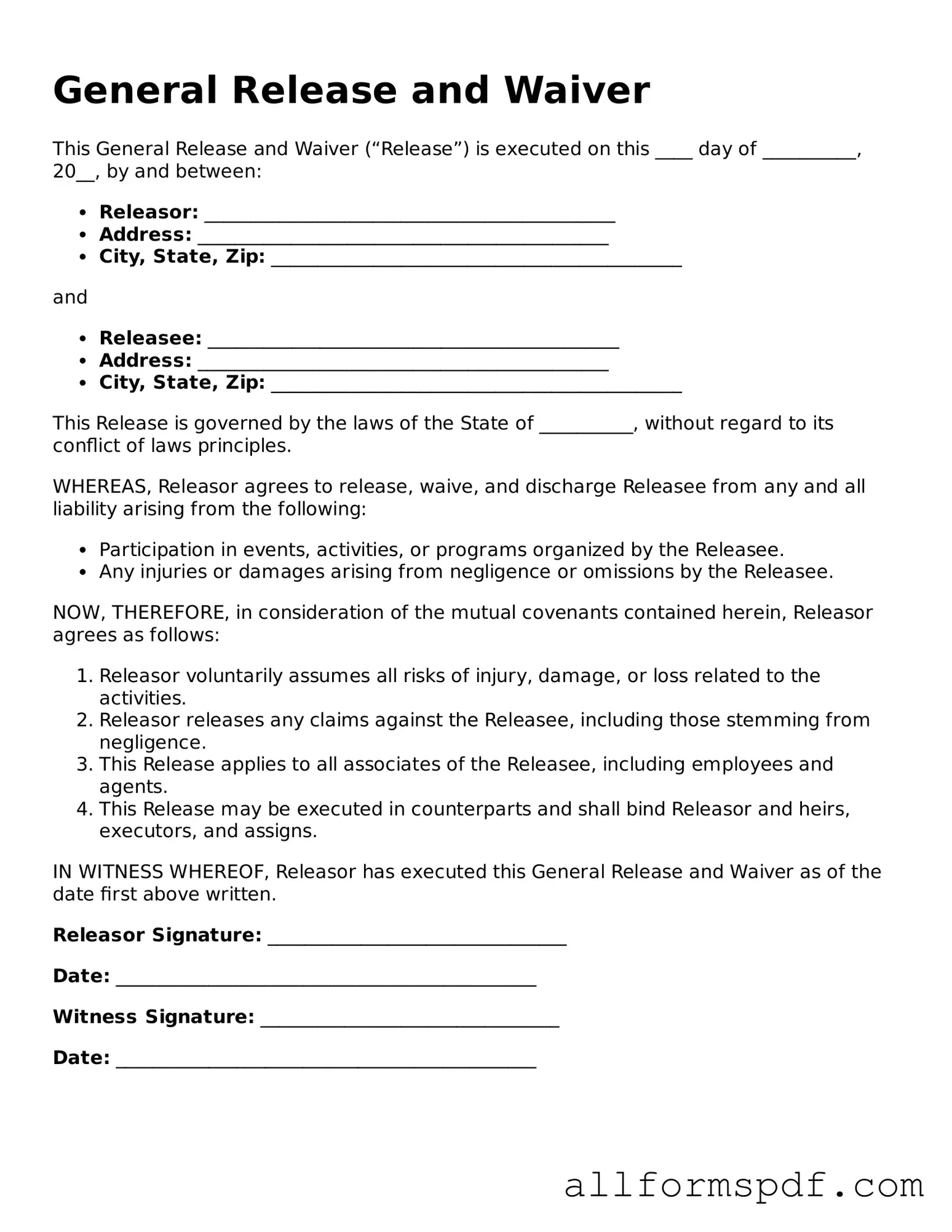When filling out a General Release and Waiver form, many individuals make common mistakes that can lead to complications later on. One frequent error is failing to read the entire document carefully. This form contains important information about rights and responsibilities. Skimming through it may result in misunderstandings about what is being waived or released.
Another mistake often made is not providing complete and accurate personal information. This includes names, addresses, and contact details. Inaccurate information can create issues if there is a need to contact the individual in the future regarding the release. Always double-check that all details are correct before submitting the form.
People sometimes overlook the date on the form. Not dating the document can render it invalid. The date serves as a record of when the waiver was signed and helps clarify the timeline of events related to the release. Make sure to include the date clearly.
Some individuals fail to understand the implications of the waiver. A General Release and Waiver can protect the other party from future claims. If someone does not fully grasp what they are giving up, they may later regret signing. It's essential to take time to comprehend the legal effects of the document.
Additionally, neglecting to consult with a legal professional can be a significant oversight. While the form may seem straightforward, legal nuances can affect its validity. Seeking advice can help ensure that the form is filled out correctly and that the individual’s rights are protected.
Finally, not keeping a copy of the signed form is a mistake many make. After signing, it is crucial to retain a copy for personal records. This ensures that the individual has proof of what was agreed upon, which can be invaluable if any disputes arise later.
